








Midweek Updates 10 Jan 2024Google Banner Ad This week in Midweek Updates The new Sling TSI with Rotax 916 IS, MT propeller and Beringer Wheelset available now. Alkantpan UAV testing an Armscor highlight. Insurgents scatter as Nigeria rules the air. Van's announces new kit pricing and changes to kits contents and ordering policies. SAAF Chief visits China. SAAF rotorcraft shortfall sees firefighting take preference over Presidential duties. AFB Ysterplaat and Girls Fly Africa inspire young girls to pursue aerospace careers. Spain orders 16 Airbus C295 in Maritime Patrol and Surveillance configurations. Bell selected for Phase 1A of DARPA Speed and Runway Independent Technologies (SPRINT) X-Plane Program. This week in history - A United States Air Force B-52D Stratofortress carrying two Mark 53 nuclear bombs crashes in Maryland, USA Bonus video - Van's RV 8 Formo.  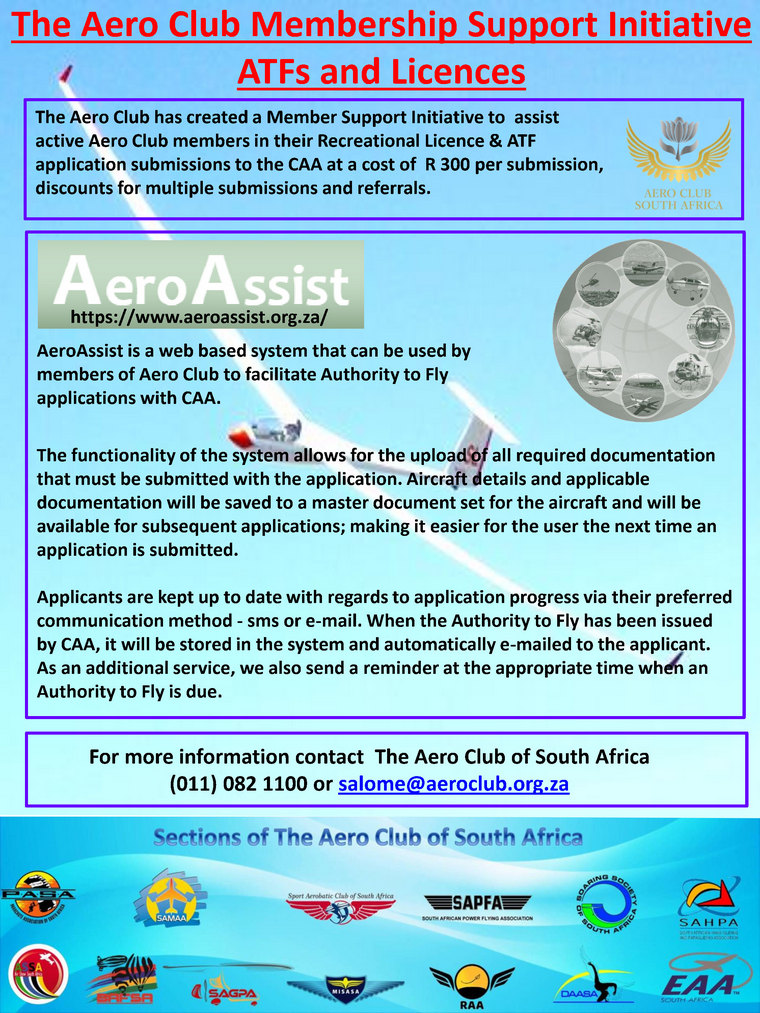    3 EAA Chapter 322 monthly gathering at EAA. Auditorium. Contact Neil Bowden E-mail: airadventuresa@gmail.com 8 MayDay SA golf day and industry dinner Serengeti Estate. Contact WhatsApp 083 797 7001 Website: www.mayday-sa.org.za 12 to 14 African Air Expo and conference CTICC, Cape Town. Website: www.airexpo.co.za 17 EAA Chapter 322 fly-in breakfast to Kitty Hawk. Contact Neil Bowden E-mail: airadventuresa@gmail.com  2 SAA Museum Society Specialised Tour limited to nine adults. Contact E-mail: events@saamuseum.co.za Cell: 076 879 5044 8 DCA Industry Roadshow Stellenbosch, Cape Town. Contact Ms Charmaine Shibambo E-mail: shibamboc@caa.co.za 8 to 10 Aero Club Airweek venue Mideelburg Airfield. Contact Sandra Strydom E-mail: sandra@aeroclub.org.za Tel: 011 082 1100 15 DCA Industry Roadshow Mangaung, Free State. Contact Ms Charmaine Shibambo E-mail: shibamboc@caa.co.za 16 EAA Chapter 322 fly-in breakfast to Brits airfield. Contact Neil Bowden E-mail: airadventuresa@gmail.com 23 Stellenbosch airshow - Fashkosh. Contact Sam Cell: 082 828 4553 or Anton Cell: 079 873 4567    THE NEW SLING TSI - WITH ROTAX 916 IS, MT PROPELLER AND BERINGER WHEELSET AVAILABLE NOW As pilots rise through the ranks and through aircraft of ever-increasing sophistication, one question remains constant: What is next? And one answer will always resonate: More. More speed. More capability. More power. More capacity. The Sling TSi encompasses all of these qualities and has become an aircraft with an uncompromising mission: To offer unrivalled performance, safety, comfort and reliability to any pilot, no matter the mission. The Sling TSi is not simply more aircraft. It is more of all the reasons you fly.  With an operating cost of around $60/hr and burning just 7-8 gallons per hour of MOGAS, the Sling TSi is the fast, efficient, economical cruiser of the modern age. In addition, for those currently building a Sling TSi kit as well as those already soaring with a Sling TSi, the 916 Upgrade Kit is now available for purchase. These kits are being manufactured and packed as we speak to start shipping from the factory globally from the first week of February 2024. For more details and pricing information, kindly reach out to your trusted Sling Distributor and upgrade your journey today! Introducing Beringer Brakes. These cutting-edge brakes boast a global reputation for exceptional reliability, recognised across diverse motorsports disciplines. Featuring advanced 6'' HE wheels with Single HE 2 piston caliper Aerotec® patent, coupled with cooling fins, sintered pads and floating discs, this braking system is meticulously designed for optimal performance. Complemented by Michelin tubeless tires, these components collectively embody the pinnacle of technical excellence. In a continued effort to ensure safety in our aircraft, Sling Aircraft and BRS Aerospace have collaborated to integrate their whole aircraft ballistic recovery system in Sling TSi aircraft models. The BRS parachute system is deployed in life threatening situations by a rocket to slow the aircraft and then lower it and the occupants to the ground in a slow and safe descent. The parachute and solid propellant ballistic rocket assembly are enclosed in a canister mounted inside the fuselage that is activated manually by the pilot. 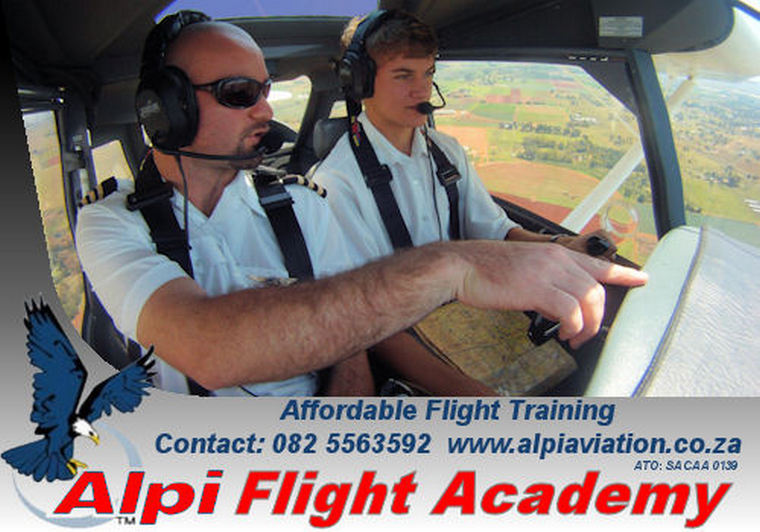 www.defenceweb.co.za The lifting of COVID-19 regulations and an increase in demand for suitable unmanned aerial vehicle (UAV) test sites put Armscor's Alkantpan test range back on the map, as it were, in the 2022/23 financial year. The State-owned company resorting under management of Thandi Modise's Department of Defence (DoD) saw the disappearance of the restrictive COVID-19 regulations in April 2022 result in 16 tests of all kinds undertaken at the 85 000-hectare Northern Cape Province range in the last financial year, up from two in the 2021/22 financial year. The range hosted its first loitering munitions testing - where ground targets were engaged by aerial vehicles fitted with explosive devices - during the period under review. 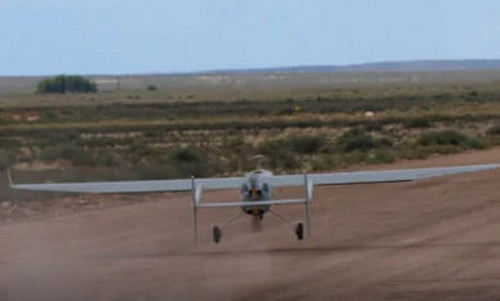 Of the 16 tests at the range, these included weapons ranging from 20 to 127 mm being fired. Alkantpan is now in its 36th year of existence with sparse vegetation, low rainfall and long firing distances easily accommodated on the 67 km long and 13 km wide range making it well suited for conventional ammunition testing (longer range testing can also be conducted once approval from neighbouring farms is obtained - inert ammunition testing can be done up to 80 km). While the Armscor 2022/23 annual report gives no Alkantpan user names, previous reports have and they include the German Bundeswehr and Diehl Defence Bodensee Geraete Technik (BGT) Defence, also from Germany, and Italy's Oto Melara. Rheinmetall Waffen Munition and Rheinmetall Defence of Germany as well as the Defence Materiel Organisation (DMO) of The Netherlands conducted tests with German and South African qualified ammunition previously. Past South African users include Rheinmetall Denel Munition (RDM), Denel (in the form of its Dynamics, Land Systems and Pretoria Metal Pressings operations), BAE Systems, Reutech Fuchs and the Council for Scientific and Industrial Research (CSIR), with some tests demonstrations for foreign clients.   Africa Defence Forum Northeast Nigeria's famed Sambisa Forest is known for its low-profile trees and dense thickets, punishing anyone foolish enough to traverse it without a machete. It spreads across 512 square kilometres in Borno State and has served as a refuge for Boko Haram and associated militants. For years, Boko Haram and the Islamic State West Africa Province (ISWAP) have used the unforgiving forest as a base of operations. Boko Haram kidnapped young girls and hid in the forest. Militants would emerge from the bush, attack security forces and disappear into its cover. In the past several years, however, Nigerian forces have begun to bombard the forest from the air, bringing militants and their associates running from it in surrender. More recently, newly acquired air assets - especially a dozen A-29 Super Tucano light attack aircraft - have helped give the army and air force new agility in the area at a reasonable cost. 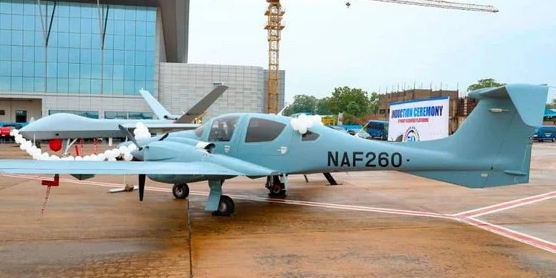 High-tech jets can cost millions of dollars to procure and tens of thousands of dollars an hour to operate, which is like "using a Rolex to drive a nail," as one expert told Air Force Times. By contrast, the Super Tucano can stay aloft for roughly $1 000 an hour. Tucanos also provide a range of weapons options, including wing- and fuselage-mounted machine guns, air-to-air missiles, and laser-guided bombs. The dozen Tucanos were part of a nearly $500 million deal with the United States in 2021. The purchase brought the turboprops to Nigeria as part of a package that includes spare parts to support several years of operations, contracted logistics support, munitions and a multiyear construction project to upgrade infrastructure at Kainji Air Base in Niger State. The A-29s have been a crucial part of Operation Hadin Kai, an ongoing counterterrorism effort that began in April 2021 when it replaced the six-year Operation Lafiya Dole. Leadership News reported in February 2023 that two Super Tucano strikes killed scores of Boko Haram militants as they gathered for a meeting in Gaizuwa on the edge of the Sambisa Forest. The A-29s fired rockets and bombs, killing some and making others flee. As Nigeria conducted air operations between 23 February and 9 March 2023, more than 1 300 people surrendered, including 699 children, 411 women and 222 men. Nigerian authorities said the total comprised terrorists and their family members. Voice of Nigeria reported that intelligence showed that some insurgents had planned to attack locations in Gamboru, Kauwa and Monguno in Borno State to disrupt national elections. Instead, a "series of air interdiction operations was carried out at these identified locations," said Major General Musa Danmadami, director of Defence Media Operations. "Feedback revealed that the airstrike dealt with terrorists, as several terrorists were neutralized with their logistics destroyed." AN IMMEDIATE RECORD OF SUCCESS The A-29s were helping Nigerian forces pressure and decimate insurgent forces immediately upon their arrival in 2021. As a truck trundled through the Sambisa Forest region with four Boko Haram extremists inside, the new aircraft kept watch overhead and waited for the right moment. Two A-29s destroyed the truck in the village of Gargash in a two-day operation that targeted three Boko Haram encampments and killed 49 terrorists. The airstrikes on 30 and 31 August 2022 were part of Operation Hadin Kai, the Nigerian Army said. Airstrikes also targeted hideouts in Minna and Gazuwa, according to Vanguard, a Nigerian newspaper. Lake Chad region counterinsurgency expert Zagazola Makama confirmed the attacks for the paper, noting that strikes killed 29 Boko Haram fighters in Gazuwa and 16 in Minna, in addition to those in the truck. On 5 December 5, 2021, also as part of Operation Hadin Kai, pilots used Super Tucanos to kill ISWAP commander Abou Sufyan and dozens of his fighters in a series of attacks in Kusuma and Sigir near Lake Chad in Borno State, according to the website Sahara Reporters. The aircraft struck an armoury base after intelligence and reconnaissance missions detected ISWAP fighters preparing to attack Nigerian troops in the area. Strikes hit a weapons-manufacturing facility, the armoury, a fuel dump, and a building filled with vehicles and motorcycles, according to the report. A week earlier, the Nigerian aircraft had destroyed gun trucks in the Gajiram area of Borno State, the Daily Post reported. ISWAP fighters there were trying to overrun the town and a forward operating base when Nigerian Air Force pilots struck. Army spokesman Brigadier General Onyema Nwachukwu said security forces recovered 10 AK-47 rifles, an anti-aircraft gun, a 60 mm mortar tube and ammunition. The Nigerian Air Force used the new aircraft to maintain the pressure into 2022. In January, another Operation Hadin Kai strike reportedly killed ISWAP senior commander Mallam Ari, who was in charge of Borno State's Kirta Wulgo region and oversaw foreign mercenaries who made improvised explosive devices for the terrorists. Super Tucano strikes killed Ari and several other ISWAP fighters and hit a structure in the area, according to Sahara Reporters. Airstrikes on 13 February 2022, killed Malam Buba Danfulani, another top ISWAP commander, near Lake Chad in Borno State, and others, according to the Nigerian magazine Northeast Star. Danfulani was responsible for coordinating the deployment of spies, collecting taxes and issuing passes. In late 2022, troops with air support attacked villages outside the town of Bama along the edges of the Sambisa Forest. Fleeing militants ran into the rain-swollen Yezaram river to escape the bombardment, where scores of them drowned. "Most of the Boko Haram elements drowned in the river, and their bloated bodies were found floating on the surface," Bukar Grema, a militia fighter working with the military, told Agence France-Presse in September 2022. "Over 100 of them were retrieved from the river and buried by our men." Civilians in Borno State seemed to appreciate the increased capacity that the Super Tucanos afforded Nigerian security forces. "We're winning the war with the Tucano," Borno resident Adamu Ali Adamu told The Defence Post. "We'll drive the terrorists into the Sambisa Forest." As the aircraft continued to help turn the tide from the air, US officials worked with Nigerian partners to fulfil commitments included in the sale to provide support facilities for the Super Tucanos. In February 2022, Nigerian and US officials broke ground at Kainji Air Force Base on the last phase of a $38 million project to build support structures. The cost is part of the larger $500 million deal. Construction was to include sunshades to house the Super Tucanos, areas for munitions assembly and storage, and an annex for the A-29 flight simulator. Nigeria isn't the only African nation that uses A-29s. Burkina Faso took delivery of three Super Tucanos in 2011 and used them for border patrols. Mauritania's small air force received at least one Tucano in 2012 to replace older craft. Angola has taken delivery of six Tucanos for border surveillance. Mali acquired four Tucanos configured for light attack and close air support. Nigeria was employing a range of air assets before acquiring the A-29s. In February 2016, it used drones to bomb Boko Haram for the first time, according to multiple reports. Police authorities have been using Orion tethered drones since early 2022 to monitor borders and crime scenes. In March 2023, the Nigerian Air Force confirmed that it had been authorized to acquire more than 50 new aircraft. Among them were: Six T129 ATAK helicopters: This twin-engine Turkish attack and reconnaissance helicopter seats two and can deliver 20 mm cannon fire and a dozen antitank guided missiles. 24 M-346 multirole trainer jets: This twin-engine tandem-seat jet offers advanced pilot training through a range of technology. It also lets pilots interact in live, virtual and computer-generated environments. Two Beechcraft King Air 360 transport planes: This plane can carry 11 people and has a reconfigurable interior that can accommodate cargo or serve as an air ambulance. Four Diamond DA62 surveillance aircraft: These can be used for law enforcement, search and rescue missions, surveillance and disaster management. 12 AgustaWestland AW109 Trekker multirole helicopters: This aircraft's doors allow for rappelling and fast-roping, and it can be used for surveillance and reconnaissance, armed escorts, troop transport, search and rescue, and medical evacuation. Despite the success of Nigeria's air campaign against insurgents, Air Marshal Isiaka Oladayo Amao, chief of Air Staff, told the media in March 2022 that all branches of the military are essential to the long-term security of Nigeria. "In any war, one major tactic is to exploit your adversaries' weakness," Amao said. "Our monopoly of controlling the air space gives us a fighting leverage and advantage in the skies. The insurgents and terrorists do not have the means to purchase, fly or maintain aircraft. "However, it may be inaccurate for us to conclude that air assets are now more important than land or sea assets. The fight is dynamic, and all the services are building capacity not just for the present events, but to protect Nigeria's territory in the immediate too long term." Written by Africa Defence Forum and republished with permission. The original article can be found here: 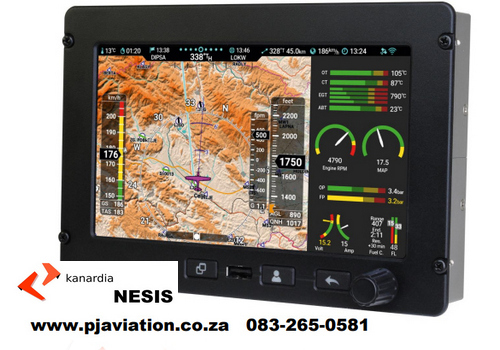  Van's Aircraft has long been known for providing excellent aircraft kits at an affordable price. Over the past few years, the cost of producing airplane kits has soared substantially. Candidly, due to a number of factors we found ourselves operating the business at a loss. Thus, to continue providing the best possible airplane designs and kits, we must increase our prices. Following an intensive internal assessment and cost review, we are increasing most of our kit prices by approximately 32%. Our online order forms will be updated this weekend with the new kit prices. Prices of individual parts and components will also be increasing, some more than 32%, and others less. While these price changes are significant, they are also necessary. Based upon our review of competitive products, even with these changes Van's continues to be the value and performance leader in light aircraft manufacturing. In conjunction with these price changes, Van's has also instituted new policies related to how we package and sell our kits. Moving forward, Van's is standardizing our kit offerings. We have reviewed what is included (or not included) in each kit and made a number of changes. In addition, we are implementing a no-deletions policy and revising our kit deposit terms and payment schedule. The changes to our kit prices and policies apply to new orders, as well as orders that were placed before the company filed for Chapter 11 bankruptcy protection. Van's will soon communicate with customers who had unfulfilled, open orders about these changes, and give them an opportunity to review our modification to their previous order(s) and to accept the new terms, conditions, and pricing. Some key changes that we would like to highlight: Deletion or Addition of Parts from Kits Van's will no longer allow the deletion or addition of parts to empennage/tail, wing, fuselage, and finish kits. Historically, Van's allowed customers to make numerous additions, deletions, modifications, and customizations to each kit order (whether a standard or quick build kit). This led to a substantial variance in the number of kits that could be picked, crated, and shipped per day, which ultimately impacted our purchasing, planning, costs, and revenue. Thus, we can no longer continue these practices. Please note that many kits have several options which can be selected on the kit order forms. You can, of course, choose from those options; however, Van's will no longer allow deletions of individual parts or additions of extra parts in a kit shipment. Customers can always order any additional parts/items they need via our web store or by phone; however, these orders will be packaged and shipped separately from the crated kit. Again, these changes are necessary for efficient warehouse operations and will help ensure that Vans can deliver kits and parts to all customers in a timely and cost-effective manner. New Deposit Terms and Schedule Moving forward for new kit orders, a deposit equal to 35% of the order amount must be received to complete any kit, engine, or propeller order. Until Van's has received this deposit, an order is considered pending. If Van's has not received a deposit within 14 days of an order being submitted, the pending order will be cancelled without further notice. (Note: Customers who purchase parts or kits from Van's will need to review, sign, and return our current purchase contract and waiver and release of liability agreements. Van's must have these on file prior to placing a pending order, or shipping any kits or parts.) New Customer Deposit Account Deposits received for kits will be held in our newly established customer deposit account, which is not used for Van's general operating expenses. Your kit deposit will remain in the customer deposit account until we start to manufacture, source, and or assemble the components of your kit. At that time, we will send you a "Notice of Production Commencement" and thereafter, we will move your deposit from the customer deposit account into Van's operating account. Approximately 60 days before we crate your kit, we will contact you to let you know that you are within our "Kit Crating Window" and you will be given 14 days to submit the remaining balance due for your order. More details on the timing of deposits and payments are set forth in the purchase agreement that you will need to sign as part of placing your order. For example: You order an RV wing kit for $18,500. To complete your order, you remit a deposit of $6,475 (35% of the order amount) and sign and submit the required agreements and documents, all of which Van's receives within 14 days. Your funds are held in the customer deposit account. When receive your "Notice of Production Commencement" your deposit is placed into Van's operating account. Approximately 60 days before we start crating your kit, we will contact you and request the balance due of $12,025, which must be received within 14 days. (For orders where taxes are due at the time of the sale, the balance will also reflect the tax amount.) The goal of implementing these changes is to improve Van's for both its customers and employees. We appreciate your support and look forward to continuing our mission to provide incredible, achievable, total-performance airplane kits - and helping you fulfil your goal of building and flying the airplane of your dreams. 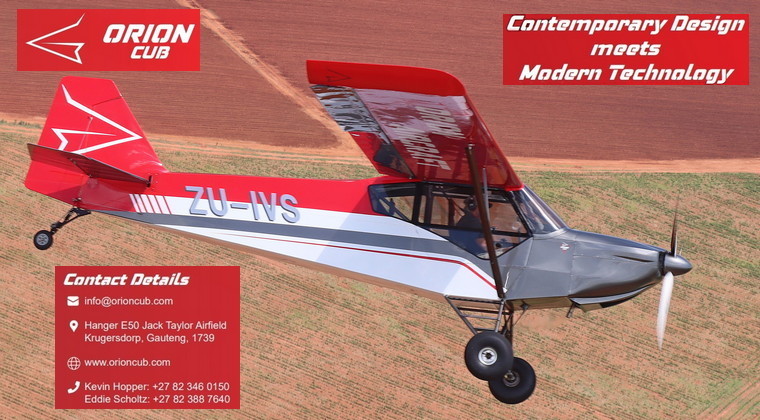 SAAF CHIEF VISITS CHINA www.defenceweb.co.za Following the September visit to South Africa by General Chang Dingqiu, Commander of the Chinese People's Liberation Army Air Force (PLA Air Force), December saw SA Air Force (SAAF) Chief, Lieutenant General Wiseman Mbambo, repay the courtesy. The visit, according to Captain VS Cekwana, Foreign Relations Officer at SAAF Headquarters, was reciprocal with the aim of promoting ongoing good Sino/South Africa air force relations and identifying areas of common interest to enhance co-operation. During the five-day visit Mbambo and his delegation, including his wife, called on South African students at the People's Republic of China (PRC) Aviation University of the Air Force. They have been at the university on aviation courses that started in April and are due to finish in February. 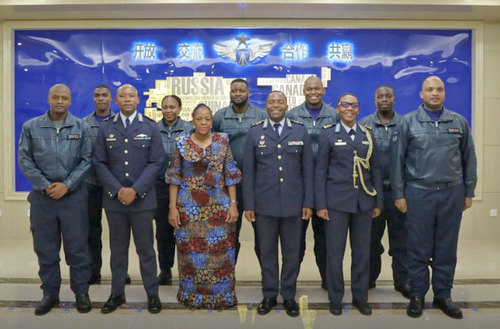 Dingqui's visit was hard on the heels of another senior PRC military officer coming to South Africa, specifically Pretoria. People's Liberation Army Navy (PLAN) Chief of Staff, Vice Admiral Hu Zhongming, paid a courtesy call to SA Navy (SAN) Chief Vice Admiral Monde Lobese at SA Navy Headquarters in Visagie Street. The year's round of high level Sino/South African defence engagements started with SANDF Chief, General Rudzani Maphwanya, in Beijing in June where he met with PRC Defence Minister General Li Shangfu. 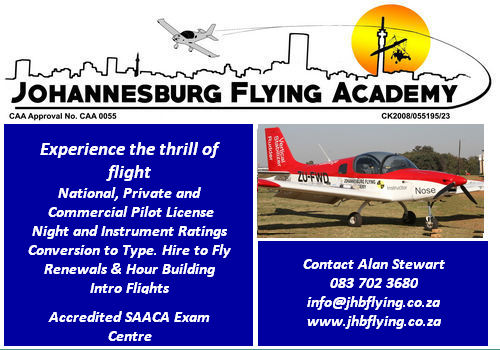 SAAF ROTORCRAFT SHORTFALL SEES FIREFIGHTING TAKE PREFERENCE OVER PRESIDENTIAL DUTIES That an Oryx medium transport helicopter tasked "For the President" had to be re-tasked for firefighting duty before Christmas is a further example of how thinly stretched the SA Air Force (SAAF) is. By Kim Helfrich www.defenceweb.co.za "The air force did what it could with serviceable assets," Brigadier General Donovan Chetty, newly appointed Director Corporate Staff Services (CSS) for Lieutenant General Wiseman Mbambo's service, told defenceWeb on Wednesday, 27 December. The re-tasking decision was made at the Air Force Command Post in Pretoria when the Simon's Town fire reached a dangerous stage last week. With a lone Oryx serviceable at Air Force Base (AFB) Ysterplaat-based 22 Squadron - and due for service - the necessity of having an operational rotorcraft available for firefighting saw the Oryx assigned for President Cyril Ramaphosa re-tasked. "Our hands are tied," Chetty said, alluding to the SAAF's dependence on Denel as the Oryx original equipment manufacturer (OEM) and maintenance provider, "and they're closed for Christmas". The previously presidentially tasked Oryx, along with Working on Fire helicopters and a fixed wing spotter, flew an undisclosed number of sorties over three days to support firefighters on the ground in and around Simon's Town. With a watchful eye on continued damping down operations, Working on Fire's Trevor Abrahams on Tuesday (26 December) told one of South Africa's three TV 24 hour news stations the Simon's Town fire saw over 2 000 hectares of land damaged. The summer fire season is now seemingly in full swing in the Western Cape province as municipal firefighters assisted by volunteers and others, such as Working on Fire, Leading Edge Aviation and the SAAF, combat multiple blazes in hot and windy conditions. Chetty said the 17 Squadron Oryx currently flying for 22 will remain at the Cape Town air force base for as long as needed. In October, Democratic Alliance (DA) shadow defence and military veterans minister Kobus Marais pointed out 85% of the SAAF fleet was "currently out of action". This emerged from a Parliamentary question reply by Minister Thandi Modise. The majority of the SAAF fleet is grounded due to "a lack of spares or budget constraints to conduct the necessary repairs" Marais was told. Modise's reply further informs him the unavailability of aircraft implies SAAF defence readiness is "compromised" with aircrew having to regain currency and "the lack of aircraft availability poses a challenge". She also said: "The challenge is the severe unavailability of funds to place contracts and it's not as a result of non-performance by Armscor or SAAF. Armscor had to engage with contractors within limited available funds and, in numerous instances, has not yielded positive results".   AFB YSTERPLAAT AND GIRLS FLY AFRICA INSPIRE YOUNG GIRLS TO PURSUE AEROSPACE CAREERS By Dean Wingrin www.defenceweb.co.za The aerospace industry is a fascinating and challenging field that offers many opportunities for growth and innovation. However, it is also a field that has historically been dominated by men, creating barriers and biases for women. 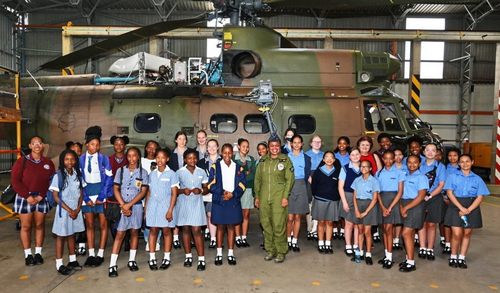 On Wednesday 15 November, the first workshop was held at the SAAF Museum branch located at AFB Ysterplaat, where it welcomed a group of young girls who have shown interest and enthusiasm for aviation and aerospace. The workshop was designed to provide the participants with a comprehensive experience that exposed them to different aspects of the industry, such as air traffic control, helicopter piloting and airline transport. The workshop also aimed to develop the skills and attributes that are essential for success in the industry and in life, such as perseverance, resilience and teamwork. The activities included inspiring presentations from females in the aviation industry who shared their personal stories, challenges and achievements. The speakers were Lt Col Jolanda Rossouw (AFB YPLT Air Traffic Controller), Captain Dakalo Mulomoni (22 Squadron helicopter pilot) and Joanne Jordan (airline pilot). A base tour included visiting 80 Air Navigation School with its flight simulators, where the girls had the opportunity to experience what it is like to fly an aircraft and navigate the airspace. The tour also included a visit to 22 Squadron and the Museum's hangar, where the girls saw different types of aircraft and learned about their history and functions. Team-building exercises and collaborative projects involved the girls working together in groups to solve problems and complete tasks related to aviation and aerospace. The exercises and projects helped the girls to develop their communication, leadership and critical thinking skills, as well as their confidence and self-esteem. These events, Mohami explained, offered a hands-on experience that surpassed the boundaries of a typical classroom setting. A mentorship programme saw female professionals in the industry volunteer their time and expertise to serve as mentors and role models for the aspiring aviators. The mentors provided ongoing support and guidance to the girls, helping them to explore their interests and goals and to plan their educational and career paths. Ledwaba shared her inspiring journey and insights with the girls. The workshop also had the support and involvement of the sponsors of Girls Fly Africa, who provided resources and opportunities for the girls, such as scholarships, internships and exchange programmes, to help them pursue their education and careers in the industry. The collaboration between AFB Ysterplaat and Girls Fly Africa was more than just a one-time event. By breaking stereotypes and empowering young girls, the partnership was laying the foundation for a more diverse, innovative, and inclusive future in the skies. The workshop inspired the girls to believe in themselves and their dreams and to spread their wings and fly. 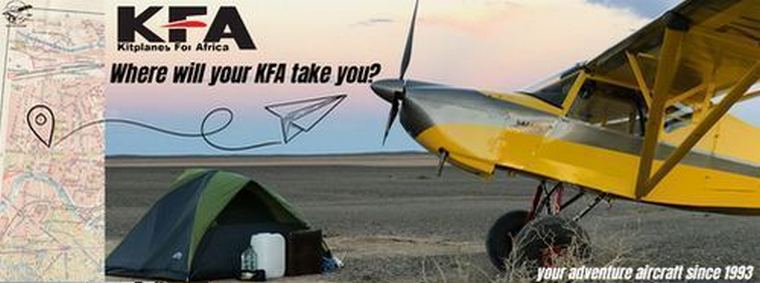 SPAIN ORDERS 16 AIRBUS C295 IN MARITIME PATROL AND SURVEILLANCE CONFIGURATIONS The Spanish Ministry of Defence has ordered 16 Airbus C295 aircraft in Maritime Patrol Aircraft (MPA) configuration and Maritime Surveillance Aircraft (MSA) configuration. The contract amounts to €1.695 billion. "The aircraft will be fully designed and manufactured in Spain, fostering the national industrial defence footprint and sovereignty" said Mike Schoellhorn, CEO of Airbus Defence and Space. "In particular, the Maritime Patrol version is the most complex C295 mission configuration to date. A major development project that will bring together the latest technologies to provide an operational advantage to our customer." The contract also includes training systems (Full Flight Simulator and Mission System Simulator) and an initial logistics support package. The C295 MPA will conduct the missions performed by the P-3 Orion fleet, which were retired at the end of 2022. It will be equipped to carry out anti-submarine, anti-surface warfare and intelligence, surveillance and reconnaissance missions. Likewise, it will be able to carry armaments such as torpedoes and other types of weapon systems. The MPA configuration will be highly connected and will be able to operate in a collaborative mode with other platforms in different domains. The aircraft can become a flying command-and-control centre, providing the Spanish Armed Forces with the versatility to carry out a wide range of missions. The C295 MSA is the natural replacement for the CN-235 VIGMA aircraft fleet, which have been in service with the Spanish Air and Space Force since 2008. It will be primarily equipped for maritime and overland operations such as anti-smuggling, anti-illegal immigration and anti-drug trafficking operations, as well as national and international search-and-rescue missions. There will be a high degree of synergy between both configurations. The Spanish Air and Space Force also operates a fleet of 13 Airbus C295 in transport configuration. The aircraft will be assembled at Airbus' military facilities in Seville.   Bell Textron Inc., a Textron Inc. (NYSE: TXT) company, has been selected to compete for the Defence Advanced Research Projects Agency (DARPA) Speed and Runway Independent Technologies (SPRINT) X-Plane program. The SPRINT program intends to design, build, and fly an X-Plane, an experimental aircraft to demonstrate enabling technologies and integrated concepts necessary for a transformational combination of aircraft speed and runway independence for the next generation of air mobility platforms. Phase 1A includes conceptual design, culminating in a formal Conceptual Design Review. 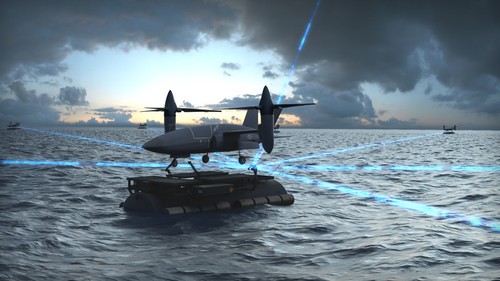 Bell plans to leverage its extensive investment in High-Speed Vertical Take-off and Landing (HSVTOL) technology to demonstrate advanced performance capabilities. Bell is currently conducting risk reduction testing at Holloman Air Force Base in New Mexico to demonstrate its folding rotor, integrated propulsion, and flight control technologies using a dedicated test article. Bell's HSVTOL technology blends the hover capability of a helicopter with the speed (400+ kts), range, and survivability of jet aircraft. Bell has developed high-speed vertical lift technology for more than 85 years, pioneering innovative VTOL configurations like the X-14, X-22, XV-3 and XV-15 for NASA, the U.S. Army and U.S. Air Force, and continues to build on its proven history of fast flight from the Bell X-1.    Uganda, Kasese district: A Ugandan People's Defence Force Diamond DA42M-NG MPP Guardian crashed under unknown circumstances in Kasese district. No reported injuries and the aircraft was written off. South Africa, near Carletonville, Gauteng: An Air Tractor AT-502A (ZS-XPC) and a Cessna T182T Skylane TC (ZS-STD) were involved in a mid-air collision near Carletonville, Gauteng. The pilot of the Air Tractor and the two occupants of the Cessna died and both aircraft were destroyed. An unconfirmed report state that one of the occupants of the Cessna was filming the Air Tractor at the time. Canada, 16 km from Diavik Diamond Mine, 300 km NW of Yellowknife, NT: An Air Tindi flight ski-equipped DHC-6 Twin Otter, impacted terrain while on approach to Lac De Gras, NT, Canada. There were 2 serious injuries, 6 minor injuries, and 2 persons with no injuries. The aircraft was substantially damaged. The charter was in support of winter road construction activities. A Royal Canadian Air Force Hercules was dispatched and 3 search and rescue technicians parachuted into the area to provide medical and survival assistance overnight. Additionally, emergency response personnel were deployed from the Diavik Diamond Mine located approximately 7 NM to the northwest; they arrived on scene the evening of the accident. All personnel were recovered from the accident site the next day and received the appropriate medical attention. Australia, Heck Field Aerodrome, QLD: The pilot of an Airplane Factory Sling 2 when landing landed slightly long so started applying the brakes. While passing over the cross runway intersection (which is at a higher level that runway 36) the aircraft got airborne again. The aircraft then landed heavily on the front wheel, the propeller touched the ground and broke the tip off one of the blades. The aircraft then bounced again and damaged the front wheel. The pilot continued to apply the brakes. The aircraft then veered to the right and came to a stop adjacent to the runway. Ukraine, Kherson Oblast: At least two and possibly three aircraft (all likely Su-34) of the Russian Air Force, were shot down by Ukrainian forces in Kherson Oblast (reportedly in Chaplynka Raion and Kalanchak Raion). Apparently, a Patriot SAM system was used. According to multiple reports, at least two crew members were killed and at least two survived. USA, near Eloy Municipal Airport (E60), Eloy, AZ: An experimental amateur-built Series 5 Kitfox was destroyed when it was involved in an accident near Eloy, Arizona. The pilot was fatally injured. The airplane was operated as a Title 14 Code of Federal Regulations Part 91 personal flight. The pilot had flown from his home base of Ryan Field (RYN) earlier in the day to have lunch at the Eloy Municipal Airport (E60) restaurant. The pilot told a friend, who flew with him on the inbound flight in another airplane, that the flight was uneventful. The accident flight was to be the return leg. Preliminary ADS-B data revealed that after take-off from runway 20, the airplane climbed to about 2,450 ft msl (900 ft agl), before making a left turn to the south. About that time, a witness who was in the front yard of his residence just below the airplane's flight path heard an engine "sputter" and then go quiet. He looked up and watched as white pieces fell from the airplane. The airplane continued to maintain level flight and he looked away. When he looked up again, he could see the airplane was rapidly descending in a vertical nose down attitude. It then struck the ground in a field across the road from his house and burst into flames. The airplane was not trailing smoke or vapours at any time prior to impact. The airplane came to rest in a dirt field, 1.2 miles southwest of the departure end of runway 20. The entire structure was consumed by fire with only steel airframe and burnt aluminium, composite, and flight instrument remnants remaining. The first identified point of impact was an almost complete impression of the airplane's forward profile in the dirt, that included the main landing gear strut, wheels, wing leading edges, and lift struts. The engine had separated from the firewall and was in the center of the impression. About 20 feet beyond the engine, both wings had come to rest in line with the impact point. The cabin and tail structure were crushed aft, such that the foot pedals were comingled with the remnants of the empennage. A single intact propeller blade along with various items of cabin contents, an iPad, and clear plexiglass fragments were located about ½ mile north of the accident site, underneath the airplanes flight path. All remaining airframe primary structure, flight control surfaces, and engine components along with the second propeller blade, which had detached on impact, were accounted for in the main wreckage. The propeller hub remained attached to the engine crankshaft. The airplane was equipped with a 160 horsepower O-320 Lycoming engine, and a composite ground-adjustable two blade propeller, manufactured by NR Prop. The airplanes maintenance logbooks indicated that the propeller assembly was installed during the condition inspection, one month before the accident. An accredited representative from the National Transportation Investigation Bureau of Ukraine, which was the state of the propeller manufacturer, has been assigned to assist with the investigation, and the propeller assembly has been retained for further examination.    3 JANUARY 1964 A United States Air Force B-52D Stratofortress carrying two Mark 53 nuclear bombs loses its vertical stabilizer in turbulence during a winter storm and crashes on Savage Mountain near Barton, Maryland -- this is known as the 1964 Savage Mountain B-52 crash. Only two of the five crewmen survive. The bombs are recovered two days later. Later accounts by residents, and at least one local media accounts from the time, indicate that the bombs were removed from the site using construction equipment supplied from local businesses to the municipal airport. As the only crew member who did not eject, the radar bombardier died in the crash and was not located until more than 24 hours afterward. The navigator's frozen body was found two days after the accident, 6 miles (10 km) from the crash and 3 miles (5 km) away from where his orange parachute was found high in a tree near Poplar Lick Run. Unable to disentangle his chute he released the Koch fittings and fell over thirty feet (9.1 m) through the tree, suffering injuries from the branches; his survival tent and other gear remained in the tree. He then attempted to find shelter and "meandered", eventually falling down a steep slope in the dark into a river basin. After landing in the "Dye Factory field", the tail gunner trekked in the dark with a broken leg and other injuries over 100 yards (90 m) to the embankment of Casselman River - in which his legs were frozen when his body was found five days later, 800 yards (700 m) from a Salisbury street light. The pilot parachuted onto Maryland's Meadow Mountain ridge near the Mason-Dixon line and, after being driven to the Tomlinson Inn on the National Road in Grantsville, notified the United States Air Force of the crash. The co-pilot landed near New Germany Road, remained where he landed, and stayed warm until rescued.  Van's RV 8 Formo  Google Banner Ad |
                                  |
 |
 |

Copyright © Pilot's Post PTY Ltd
The information, views and opinions by the authors contributing to Pilot's Post are not necessarily those of the editor or other writers at Pilot's Post.